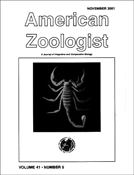-
PDF
- Split View
-
Views
-
Cite
Cite
JAMES T. CARLTON, Neoextinctions of Marine Invertebrates, American Zoologist, Volume 33, Issue 6, December 1993, Pages 499–509, https://doi.org/10.1093/icb/33.6.499
Close - Share Icon Share
Abstract
Historical or recent extinctions (here called neoextinctions) are rarely reported among marine and estuarine invertebrates. Four case histories of neoextinctions, using gastropod mollusks (snails) as examples, are reviewed: the periwinkle Littoraria flammea (last collected < 1840 in China), the rocky shore limpet “Colliselld” edmitchelli (1861/3 in southern California), the eelgrass limpet Lottia alveus (1929 in Maine), and the marsh horn snail Cerithidea fuscata (1935, southern California) are all probably extinct. The central element in the demise of all four species may have been a vulnerable, extinguishable habitat. Three considerations suggest that neoextinctions among marine invertebrates have been generally overlooked: 1), hundreds of taxa have not been reported since the 18th and 19th centuries (these are treated by systematists as either unrecognizable, rare, or synonyms of known species); 2), species may have become extinct prior to their description; and 3), there has been a precipitous decline in systematics, biogeography, and natural history at the end of the 20th century—leaving too few workers to tell the story of neoextinction in the ocean. Searches in the literature and museums for overlooked neoextinctions would fruitfully focus on species reported from highly impacted, urbanized coastal habitats—saltmarshes, estuaries, lagoons, seagrass communities, and supralittoral (maritime) zones—habitats now largely obliterated on most coastal margins of the world.
Author notes
1 From the Symposium The Crisis in Invertebrate Conservation presented at the Annual Meeting of the American Society of Zoologists and the Canadian Society of Zoologists, 27–30 December 1992, at Vancouver British columbia.



